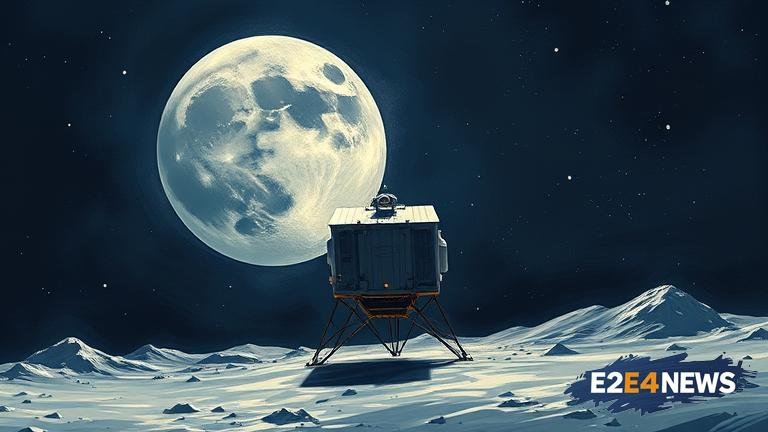Pakistan is taking a giant leap in its space exploration program, with plans to land a spacecraft on the moon by 2035. The ambitious project is being undertaken with the support of China, which has been a key partner in Pakistan’s space endeavors. The Pakistan Space and Upper Atmosphere Research Commission (SUPARCO) is leading the charge, with a team of scientists and engineers working tirelessly to make the mission a success. The spacecraft, which is still in the design phase, will be equipped with state-of-the-art technology, including advanced navigation and communication systems. The mission will not only mark a significant milestone in Pakistan’s space exploration program but also demonstrate the country’s capabilities in space technology. China has been a key player in Pakistan’s space program, providing technical and financial support for several projects. The two countries have a long-standing cooperation in space technology, with China launching Pakistan’s first satellite, Badr-1, in 1990. Since then, China has launched several Pakistani satellites, including the PakSat-1R and the PRSS-1. The moon mission is the latest example of the strong partnership between the two countries in space exploration. Pakistan’s space program has been gaining momentum in recent years, with the country launching several satellites and conducting research in space technology. The SUPARCO has been working closely with international partners, including China, to develop its space capabilities. The moon mission is a significant step forward for Pakistan’s space program, and it is expected to pave the way for future missions to other planets and celestial bodies. The project is also expected to have significant scientific and economic benefits, including the potential for mineral exploration and the development of new technologies. The Pakistani government has been providing strong support for the space program, with a significant increase in funding in recent years. The SUPARCO has also been working to develop its human resources, with a focus on training and capacity building. The moon mission is a testament to the country’s commitment to space exploration and its determination to become a major player in the field. The project is also expected to inspire a new generation of scientists and engineers in Pakistan, and to promote interest in space exploration and technology. With the support of China, Pakistan is well on its way to achieving its goal of landing a spacecraft on the moon by 2035. The mission is a significant milestone in the country’s space exploration program, and it is expected to have far-reaching implications for the country’s scientific and economic development. The success of the mission will also demonstrate the strength of the partnership between Pakistan and China in space technology, and it is expected to pave the way for future collaborations in the field. In conclusion, Pakistan’s moon mission is a significant step forward for the country’s space program, and it is expected to have significant scientific, economic, and inspirational benefits. With the support of China, Pakistan is well on its way to achieving its goal of becoming a major player in space exploration.





